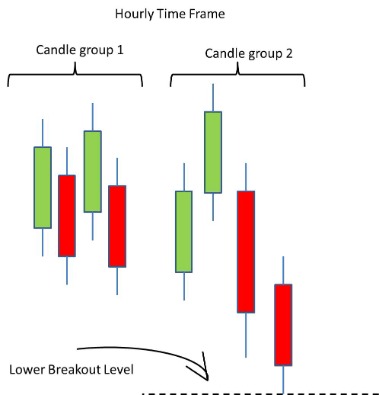What is Market Capitalization? Robinhood
Content
This material, whether or not it states any opinions, is for general information purposes only and it does not take into account your personal circumstances or objectives. This material has been prepared using the thoughts and opinions of the author and these may change. However, City Index does not plan to provide further updates to any material once published and it is not under any obligation to keep this material up to date. This material is short term in nature and may only relate to facts and circumstances existing at a specific time or day.

On the other hand, if I paid $50,000 for it, it also doesn’t mean it’s worth $50,000. If I paid $200,000 for the car, it doesn’t mean it’s worth $200,000. To put it another way, it’s the amount of money it would require to buy the company outright in a single transaction. Our goal is to deliver the most understandable and comprehensive explanations of financial topics using simple writing complemented by helpful graphics and animation videos. Our team of reviewers are established professionals with decades of experience in areas of personal finance and hold many advanced degrees and certifications. Robinhood Financial LLC (member SIPC), is a registered broker dealer.
Why is Market Cap Important?
Mid-cap stocks typically fall between small caps and large caps for their growth and safety guidelines. Cryptocurrencies use coins instead of shares, but the market capitalization concept remains the same. You can calculate a coin’s market cap by multiplying all circulating coins by the price of each one. Crypto typically exhibits greater price volatility than stocks, so a coin’s market cap will also fluctuate rapidly. Lots of stock indices – including the S&P 500 (US SP 500), FTSE 100 (UK 100) and the DAX 40 (Germany 40) – use market capitalisation as part of their price calculations. For the same reason we touch on above, because share prices alone can be skewed and not tell the whole story.

But when you buy shares, “market cap” isn’t just a ranking system for stocks. It’s like having a playbook that tells you how a stock might behave. Market cap is calculated by multiplying the number of stock shares outstanding by the current share price.
Why is market cap important?
The market cap represents the amount you would pay to buy up all of the company’s shares, not necessarily its true value. The size of a business’s market cap determines the broad category of publicly traded company it falls under—small-cap, mid-cap, or large-cap. When you’re evaluating a publicly traded company and deciding whether you want to purchase some of its stock, you shouldn’t focus solely on the price of one share. Make sure you look at its market capitalization, or “market cap,” to get a clearer picture of how the market values the company.
Since Inception returns are provided for funds with less than 10 years of history and are as of the fund’s inception date. 10 year returns are provided for funds with greater than 10 years of history. Volatility profiles based on trailing-three-year calculations of the standard deviation of service investment returns. Benzinga complied a list of brokers to help you master your trading strategies and achieve your financial goals. He and his wife, Melissa, share a passion for horses, polo, and eventing.
Market cap is useful for analyzing industry trends and the competitive landscape. Investment professionals may consider a company’s market capitalization with its profitability metrics to understand its financial stability and investment potential better. A company’s market capitalization—or total outstanding share value—might not seem important when you buy the smartphone, cereal, or car the company manufactures.
Strategies That Outperformed the S&P 500 by 200%+ for the Last 10 Years
Large caps, also known as blue-chip stocks, are established companies with long track records of success. The return on investment might not be as quick or spectacular as small or mid-cap growth stocks, but large caps often pay out dividends when possible, and the share price fluctuations are historically less volatile. Most of the best-known companies in the world are large caps, and these are typically the companies that have established themselves as the leaders in their industries.
- No opinion given in this material constitutes a recommendation by City Index or the author that any particular investment, security, transaction or investment strategy is suitable for any specific person.
- NerdWallet does not and cannot guarantee the accuracy or applicability of any information in regard to your individual circumstances.
- Traditionally, companies were divided into large-cap, mid-cap, and small-cap.[8][4] The terms mega-cap and micro-cap have also since come into common use,[9][10] and nano-cap is sometimes heard.
- Market capitalization refers to the market value of a company’s equity.
If they mention a large-cap utility stock, they mean a large, publicly-traded, utility company. Market cap comes with many advantages but it also comes with some disadvantages. Here are the pros and cons you can expect with market capitalization. Focus on determining the company’s true value and let the market cap measures simply be a benchmark you look at to learn whether the market is over or under-valuing the company. In order to find the true value of the company, it’s critical to look beyond just the market cap.
Market Capitalization Categories FAQs
Some stock market terminology can leave you totally perplexed, but at the same time, adds value to your understanding of the markets. Rely on the right metrics first to determine whether a company is a worthy investment. Then, you can use the market cap to help you determine if it’s on sale and if it has the growth potential you’re looking for.
Profitability metrics, such as return on investment (ROI) and return on equity (ROE), measure a company’s ability to generate profits and return value to its shareholders. This figure provides valuable insight into the growth prospects of ABC Inc. as a company. For instance, with a market cap of $3 https://g-markets.net/helpful-articles/7-best-forex-trading-books-for-beginners/ billion, ABC Inc. is considered a mid-cap company and stock, as its market cap falls between $2 billion and $10 billion. Investors might want to divide their portfolio among stocks of different market capitalizations, or they could risk losing too much ground when large-caps or small-caps sag.
- For example, a smaller company might have more upside potential but may be riskier due to its size and less established track record.
- They’re reliable in terms of dividend payouts and typically don’t grab headlines the way some flashier stocks might.
- Lots of stock indices – including the S&P 500 (US SP 500), FTSE 100 (UK 100) and the DAX 40 (Germany 40) – use market capitalisation as part of their price calculations.
Like other FAANG stocks, though, its share price has struggled in 2022. After all, take a look at the list of the largest stocks by market cap and you’ll see some of the most successful companies on the planet. For private companies it’s a more nuanced (and subjective) calculation. Since private companies don’t have publicly-traded shares, it’s not entirely clear how much shares would be worth. For public companies, one way to estimate its value is by calculating its market cap. Market capitalization is also a critical component of investment analysis, offering more granular insights into a company’s health and standing.
Robinhood Securities, LLC (member SIPC), provides brokerage clearing services. Many or all of the products featured here are from our partners who compensate us. This influences which products we write about and where and how the product appears on a page. Expense Ratio – Gross Expense Ratio is the total annual operating expense (before waivers or reimbursements) from the fund’s most recent prospectus. You should also review the fund’s detailed annual fund operating expenses which are provided in the fund’s prospectus.
If it were to retain the same market cap of $458.4 billion, the price would have to drop to roughly $21,828 ($458.4 billion / 21 million). Therefore, companies with large inventories of unissued securities or coins are at greater risk to face price decreases if investors wish to keep its market cap the same regardless of outstanding tokens. Companies that have a market capitalization of between $300 million to $2 billion are generally classified as small-cap companies.
For example, the market cap of the Nasdaq would equal the market cap of all the companies traded on the Nasdaq combined. Market cap offers a quick way to see how a stock is performing against its peers. If a company has a high market cap, it usually means that investors value it more than others in its sector. For example, Bitcoin, the largest cryptocurrency by market cap, has a current market cap of just shy of $500 billion, reflecting its widespread adoption and strong demand from investors. As a result, small-cap companies may be suitable investments for those willing to tolerate elevated risk levels in pursuit of higher returns.
As the exercise of warrants on shares are done at a price below the market price, it could affect the market value of a company. However, stock splits or dividends rarely impact market cap, as with a split/dividend the number of outstanding shares increase. However, the effect is nullified by a reduction in the market price of the share. Market cap is a metric which values a company by taking into account the number of outstanding shares and the current market price of its shares. Market cap is the product of the number of outstanding shares and the market price per share of the company. Unlike the established companies that make up large-cap stocks, small-cap companies have a higher potential for risk, but also an aggressive growth potential that could result in dramatic returns.
Irrational exuberance drove stock prices beyond a reasonable valuation. However, you shouldn’t take capitalisation in isolation, as it only tells you the markets’ view of a company – ignoring key fundamentals such as revenue, profits and growth. Key financial ratios such as P/E (price to earnings) and P/B (price to book value) offer a much more holistic view of an equity. By tracking changes in market cap over time, investment professionals can identify emerging trends, shifts in market share and changes in a company’s competitiveness. The market cap provides a comprehensive view of a company’s capital structure.
Bài liên quan
Đăng đánh giá



